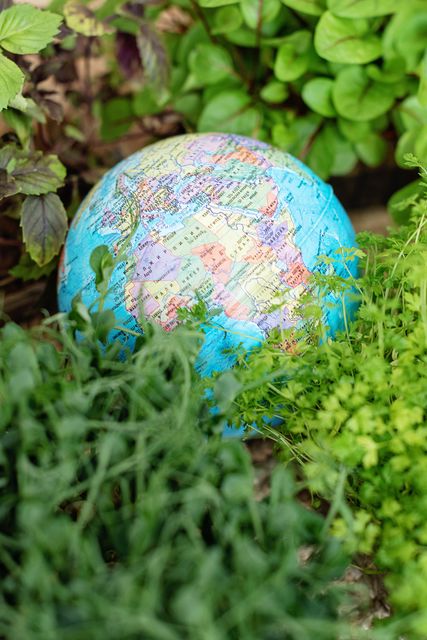
“Hope is the thing with feathers
Emily Dickinson
That perches in the soul
And sings the tune without the words
And never stops at all.”
In my work as a counselor, my clients and I usually reach a place where we consider their values. I point out that values are not just inspirational ideas that we bring to mind from time-to-time to inspire us, like word on a poster or the refrigerator door.
Values reflect our deepest desires for how we want to be in the world, how we want to behave and interact with others, what matters to us most, and what we want to stand for. They guide and motivate our actions in all areas of life, as they represent the kind of person we aspire to be.
So at any given moment, even in the face of struggles with the thoughts and feelings of anxiety, depression, or trauma, what action can you commit to that will express a particular value? I have been thinking about these conversations a lot over the last few weeks, as I have reflected on the power and presence of hope in my life and in the world.
My desire in these reflections on hope is to move hope beyond some inspirational ideas that we bring to mind from time-to-time, and then let go of as we go on with life.
Are there ways at any given moment, even in the face of a world that seems to be void of any promise and meaning, that hope can invite us to commit to actions that give expression to it in the world?
In a previous post, I spoke of how biblical images of hope coalesce around the word, “new.” Through Isaiah, God speaks of how God is declaring new things and doing new things. He speaks of how God is creating a new heaven and a new earth. There is a new covenant inscribed on our hearts. Hope is not like optimism, extrapolating all that we find good in the present into the future. Instead, hope is bringing to bear on the present the yearnings and desires that God has for the world.

So, the newness of hope is not just a slight alteration of plans. It is more than something completely different. It may be something we have not even imagined.
In her book, Animal Dreams, Barbara Kingsolver talks about two sisters. She describes Codi as someone who is trying to find her place in the world, to find meaning in life. She wonders if she could be like her idealistic sister, Hallie, who is helping poor farmers in Nicaragua. In a letter to Codi, Hallie shares these words: “The very least you can do in your life is figure out what you hope for. And the most you can do is live inside that hope. Not admire it from a distance but live right in it, under its roof.”
How can we live inside the hope of Advent? When we wake up every morning and our eyes look at the ceiling above, can we also picture it as the roof of hope under which we live? What is it like to think of God as one doing new things? How does the image of a “God of new things” impact the way we live and order our lives.
Perhaps every morning we could state our intention, make a commitment to look for something new. Yes, even in the presence of the sameness, look for something new.
A gratitude practice that I often teach to my clients is the G.L.A.D. Technique. It is an acronym for paying attention to certain positive aspects of life that are around you all the time, but which frequently go unnoticed.
- G—One Gratitude that you are thankful for today.
- L—One new thing you Learned today. It could be something your learned about yourself, a friend, a loved one, even an enemy. It could be a new fact or a new perspective.
- A—One Accomplishment you did today. It does have to be something grand. It could be as simple as getting enough sleep, keeping your diet, doing something that moves you towards a goal.
- D—One thing of Delight that touched you today. Something that makes you laugh, smile. Something that brings you joy.
Many people have found this practice life changing. One person spoke of how it takes them far beyond writing down things they think of in a journal. It invites them to look out into the world, to watch for, to anticipate these moments of gratitude, learning, accomplishment, and delight. They are not thoughts or memories; they are occurrences happening right in front of them. Seeing them gives them hope.
Hope is often described with images of light. We speak of a glimmer of hope, or a ray of hope. The biblical story talks about a light in the darkness. We use the image of a light at the end of a tunnel.

Light is an important part of the Advent journey. There are the lights of the Advent wreath. In fact, the traditional name for one of them is the Candle of Hope. Perhaps you could begin your morning or end your evening by lighting a candle. If you do it with the lights off, you can see the simple, gentle flame holding off the darkness. Some people “light a candle” during the day with an app on their phone. They pause between tasks or at a certain time, open the app, and gaze at the candle. In the middle of the routine of another day, there is the simple light of hope.
Look for other images of light during the day.
I have friends on Facebook who, almost daily, post a picture of a sunrise, a sunset, or a moment when rays of light shine forth from behind a cloud. Often, they speak of the hope and promise these pictures give them, and so, they want to share with others. Look for rays of light through a window or feel the rays of light on your face. Enjoy the lights in your neighborhood during this season. Pause and wonder: What can they say to me about hope?
Be aware of your language in your interactions with others. Does it encourage hope?
Isn’t it interesting that many of our conversations that are shaped by social convention have a negative quality to them. If we bring up the weather, it’s a stretch of bad weather. The latest news event is dire. Politics? Rarely a celebration of a good policy decision.
Again, these water cooler conversations are something in which we participate without thinking. What would it be like to be more intentionally hopeful in these interactions? Going back to the G.L.A.D. technique, we could ask about something for which they are grateful. Something which they learned or accomplished? Something in which they found delight? You may be thinking, “If I did that, it would feel strange. It might throw them for a loop.
Feeling strange. Throwing for a loop. Good descriptions of hope if you ask me.
When the topic of hope comes up, many conversations begin with descriptions of the difficult and dire situations in the world that show why hope is needed. You may have many of them going through your mind right now. And yet, hope, unlike optimism, is not dependent on circumstances. Hope is not finding some sliver of good in the present and projecting it into the future.
“Hope is an orientation of the spirit grounded in the conviction that events and actions have meaning, regardless of how they turn out” (Frederic and Mary Ann Brussat, Spiritual Rx: Prescriptions for Living a Meaningful Life, 112).

The invitation of Advent, the invitation of the spiritual journey goes beyond having hope. It is about living hope. It is not about being hopeful. It is about being hope in the world. A hope grounded in the certainty of God’s promises. It is not about being inspired by the idea of hope. It is allowing the deep reality of hope to shape your attitudes and your actions every day.
Thank you for joining me on this journey into hope. I welcome the thoughts and reflections you can add to the conversation.

Thank you for reminding me of GLAD! It had slipped my mind. Now is a good time for me to bring GLAD back into my life.
Lynne,
I actually thought of you as I was writing that. I remember how much that meant to you when you first encountered it. Thanks for reading.
Yet again you have stimulated me to reflect with an effort to be more precise in my thinking. Does hope come to us, arise within us, or in combination? Hope, for me has frequently come through others who care about me, and I have found hope as I have attempted to help others in some way.
Hope may well be an engine for action, for doing; but losing hope through over reaching can make finding hope difficult. Reflection, prayer, focus…..and frankly…. primarilyy focus help crystalize the ethereal notion of “I hope…” . Otherwise, I find myself in a position of: Not sure where I’m going, but I’m making great time”
Sorry I missed this an just know approving it for a post. Thanks for sharing Daniel!!!